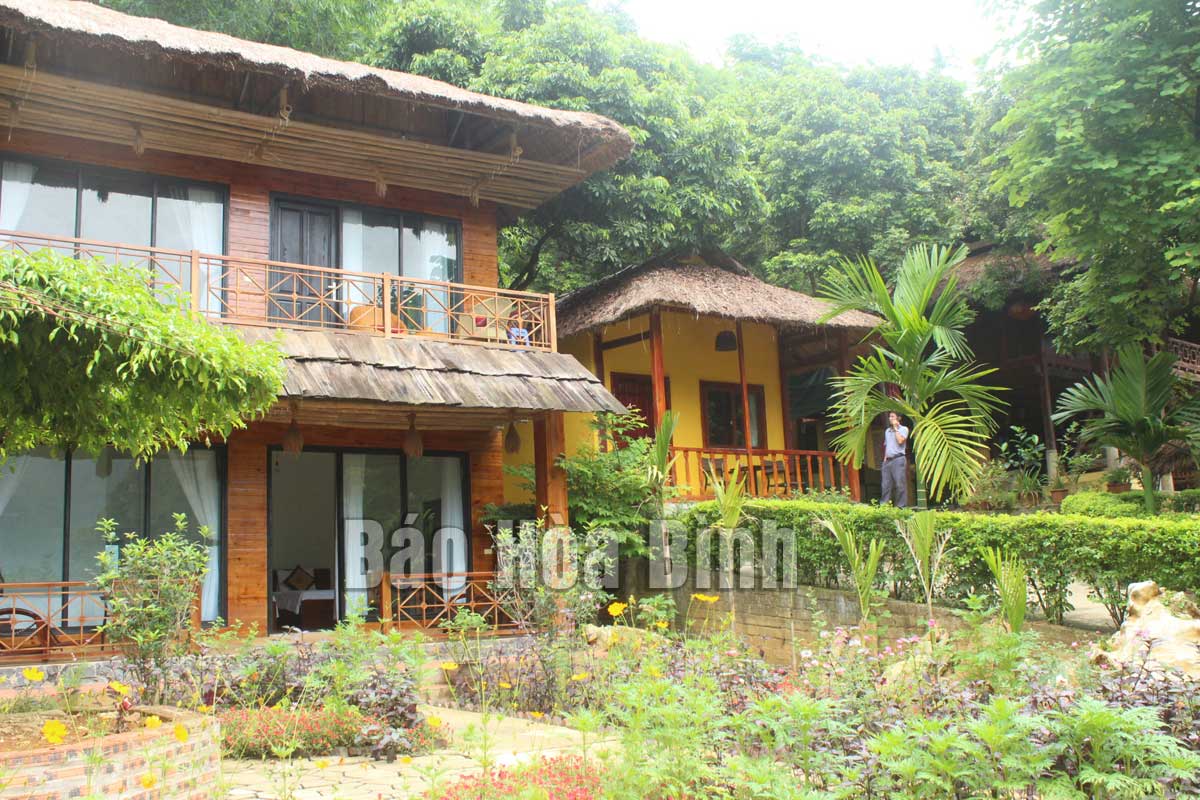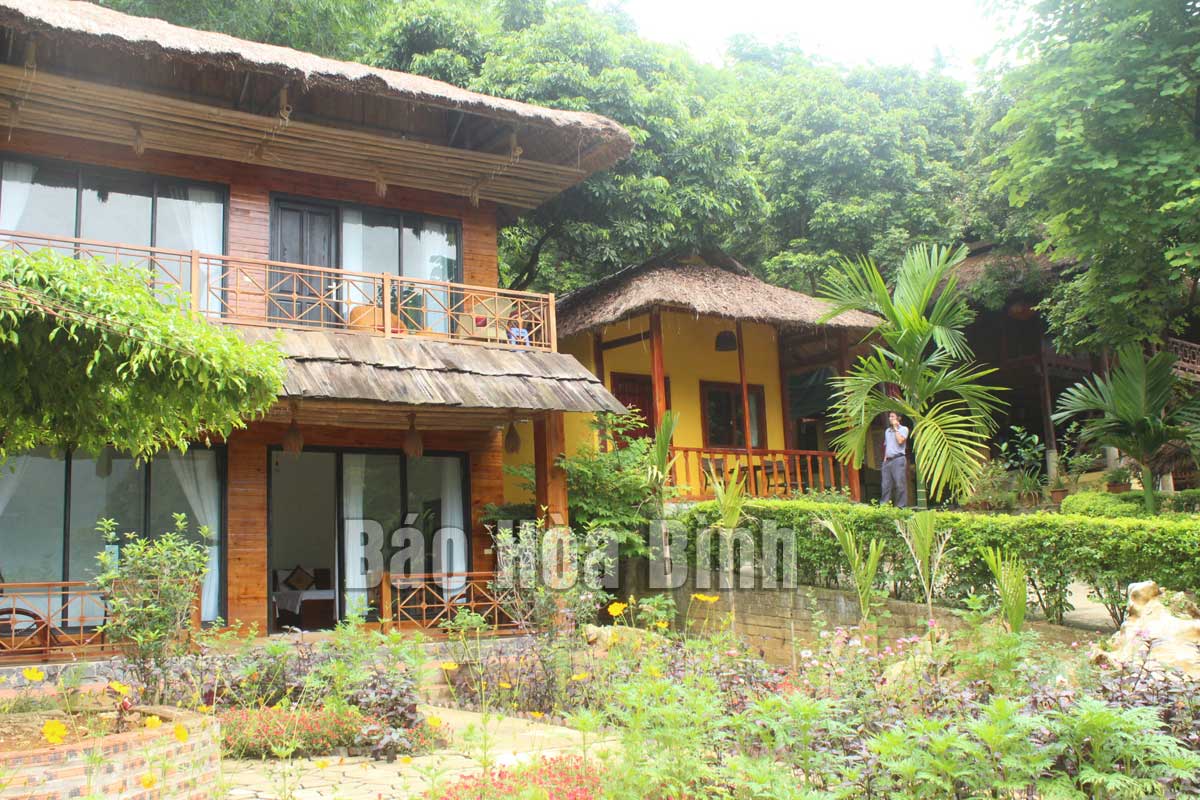
(HBO) – Implementing Action Programme No. 15- CTr/TU dated September 22, 2017 of the Standing Board of the provincial Party Committee on the performance of the Politburo’s Resolution No. 08-NQ/TW dated January 16, 2017 on turning tourism into a spearhead economic sector in the 2017- 2022 period, Hoa Binh province has promoted the development of human resources for the tourism industry and organised training courses to improve professional skills for state management officials and tourism companies.
There are
many tourist attractions in Na Phon commune, Mai Chau district.
Every year, the provincial Steering Committee for Tourism arranges trips for
its members to exchange experiences relating to tourism development management
in a number of provinces and cities, whose tourism sectors have developed such
as Quang Binh, Quang Nam, Khanh Hoa, Quang Ninh, Thua Thien-Hue and Da Nang.
The province prioritises developing human resources towards
professionalism, civilisation and improving their competitiveness to meet the
needs of tourists. Attention will be paid to on-the-spot training at resorts,
tourist attractions, hotels and restaurants, especially at Hoa Binh lake and
Mai Chau tourist areas. Priority will be given to supporting professional
training for ethnic minorities engaged in tourism in community-based tourism
villages.
Over the past five years, the Department of Culture, Sports and Tourism has
coordinated with a number of universities and colleges to organise 30 courses
for 1,630 participants. They include six training courses on One Commune One
Product (OCOP) rural tourism services in Mai Chau, Tan Lac, Cao Phong and Da
Bac districts.
The Department of Agriculture and Rural Development held training courses to
improve the quality of human resources in the field of tourism service
business, focusing on supporting start-ups, transport businesses and households
that engage in community-based tourism.
The Department of Labour, Invalids and Social Affairs asked vocational training
institutions to offer training on tour guides, cooking and receptionists for
households that offer homestay services as well as restaurants in the districts
of Da Bac, Mai Chau, Kim Boi, Cao Phong, Tan Lac and Hoa Binh city to
contribute to promoting tourism development in general and community-based
tourism in particular./.
A diverse chain of eco-tourism and resort destinations concentrated in Hoa Binh city and the districts of Tan Lac, Da Bac, and Luong Son… Along with the launch of several key high-quality resort tourism projects, these developments have reshaped the landscape and enhanced the appeal of Hoa Binh as a travel destination.
Boasting diverse terrain, a mild climate, and rich natural resources, Cao Phong district is increasingly asserting its place on Vietnam’s tourism map, attracting both domestic and foreign visitors. The district is renowned for its stunning landscapes, majestic mountains, a crystal-clear hydropower lake, and the unique cultural identity of local ethnic groups.
With its pristine landscapes, unique cultural heritage of Muong ethnic minority, and an expanding range of visitor experiences, Tan Lac district of Hoa Binh has fast become a captivating destination for both domestic and international tourists.
Until now, Sung village in Cao Son commune, Da Bac district remains the only Dao ethnic community in Hoa Binh province to develop a community-based tourism model. Beyond its untouched natural landscapes, cultural identity serves as the cornerstone attraction for visitors.
Alongside the diverse cultural identities of the Kinh, Muong, Tay, Thai, Dao, and Mong ethnic people, Hoa Binh province is also renowned as the "capital" of the northwestern Vietnamese cuisine, offering unique and distinctive dishes. At festivals, during Lunar New Year (Tet), or on significant family or community occasions, special dishes are prepared, leaving a lasting impression on visitors.
A Phong Linh (Yellow Tabebuia) flower garden in Thang village, Thach Yen commune, Cao Phong district is currently in full bloom, drawing a large number of visitors.



